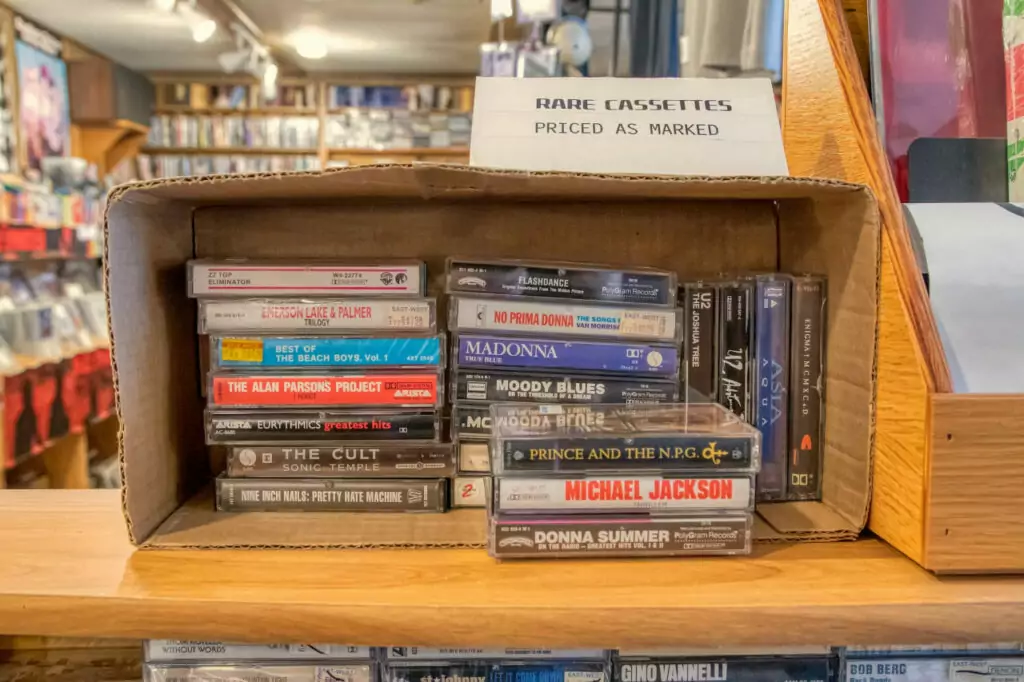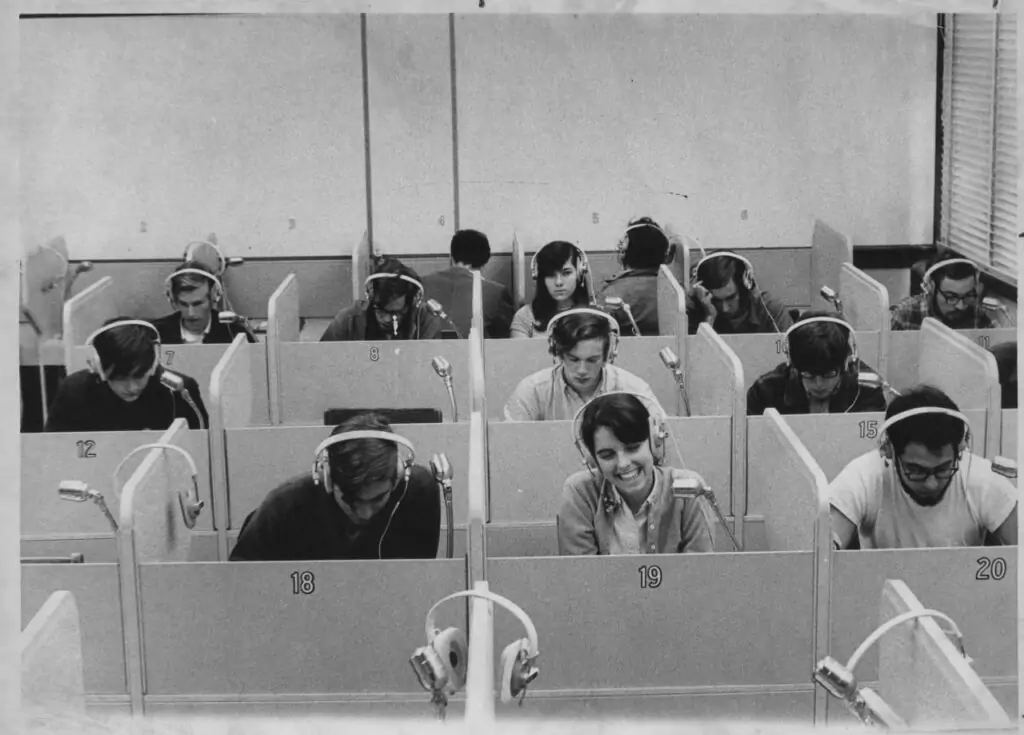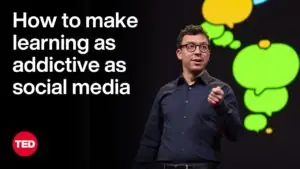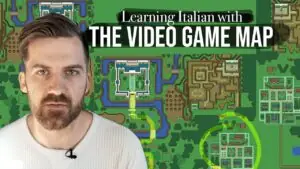In the age of smartphones and apps, it’s hard to imagine a time when language learning was anything but a click away. This article takes you on a nostalgic journey, exploring the fascinating history and evolution of language learning methods before the digital era.

✅ AI Essay Writer ✅ AI Detector ✅ Plagchecker ✅ Paraphraser
✅ Summarizer ✅ Citation Generator
Key Takeaways:
- Before the internet, people relied on audio cassettes, TV, and radio broadcasts as key language learning resources.
- Traditional learning in classrooms offers strong cultural immersion and immediate feedback but lacks flexibility. Modern learning is tech-driven, highly customizable, and can be accessed anytime, anywhere.
- The “best” method for learning a language depends on your personal goals, whether it’s cultural understanding or flexible scheduling.
In a world where you can instantly access language learning apps, online forums, and even live chats with native speakers at the touch of a button, it’s easy to forget that learning a new language wasn’t always so convenient.
The Gen Z generation is curious to know how people managed to master any foreign language before the internet made immersion a daily possibility. Imagine trying to learn English without Google Translate, or how to pronounce French words without a YouTube video. Sounds like torture.
What if you couldn’t afford language schools or didn’t have one nearby? Could you really become fluent by reading a book from the library or flipping through a language magazine? With so many questions and an insatiable curiosity about the “old ways,” let’s dive into the fascinating history and evolution of language learning methods that existed before our digital age. Seasoned learners in the community shared personal experiences in becoming fluent in any language.
Audio Resources: Cassettes and Records
In a time when smartphones and apps were the stuff of science fiction, people had to make do with what they had for language learning, and often, that meant audio cassettes and records. As one individual reminisced:
“You could buy packs of cassette tapes that contained audio recordings of language lessons taught by native speakers, and some of them were quite good.”

These tapes or records would typically come as a set, often accompanied by a textbook or a guide that walked the learner through lessons. The unique feature of these audio resources was their attempt at interactivity:
“While listening to the audio cassettes, they would deliberately insert pauses after introducing a new word or sentence, so that you would be able to speak it out loud to practice your pronunciation.”
Although far from the interactivity we’re accustomed to today, this pause-and-repeat system offered a rudimentary form of engagement and a chance to practice pronunciation, even if there wasn’t someone there to correct you.
Broadcast Media: Television and Radio
The older generation had to often rely on scheduled broadcasts for their language-learning needs. Some of the earlier learners recall:
“There were some rare TV programs for language learners. Foreign radios on small waves. Subtitled films in some theaters or broadcasted on TV late at night.”
These broadcasts not only taught vocabulary and basic sentence structure but also imparted cultural nuances—an essential but often overlooked aspect of language learning. However, this method had its downsides. Unlike today, where you can pause, replay, or slow down digital media, old-school broadcast media was essentially a one-time opportunity.

Learning and Language Labs
For those who could afford it or had access to the right institutions, immersive learning took the form of intensive language programs and high-tech (for the time) language labs. One individual who went the immersive route shared:
“I did an intensive Italian program one summer; it was classroom immersion for 5 hours a day then other activities.”

Language labs were another interesting innovation. These classrooms were equipped with audio technology that allowed for a bit more interactive learning.
“Every desk had a set of headphones and microphone hidden in it, and students could put them on, then the teacher could play audio and everyone would hear it and respond into the microphone.”
However, these setups were costly and complicated to maintain. By the mid-80s, many such labs had already fallen into disuse.
Modern vs. Traditional Language Learning Methods
When it comes to mastering a new language, the debate between traditional and modern methods is evergreen. Traditional learning typically occurs in a classroom setting with in-person sessions led by a tutor. This method is prized for the rich interaction it provides, allowing students to not only learn the language but also absorb cultural norms, values, and communication skills from their instructors. It’s especially effective for immediate feedback on pronunciation or grammar, elevating students’ confidence as communicators.
In contrast, modern learning employs cutting-edge technology like mobile applications, YouTube videos, and podcasts to educate students. This method caters to the individual needs, abilities, and interests of the learner, offering a level of customization rarely achieved in traditional settings. Modern learning makes language acquisition more interactive, engaging, and even fun. It promotes critical thinking, decision-making, and analytical skills, as learners navigate through a plethora of digital resources to find what best suits their learning style, sometimes with the help of online language tutors.
While both traditional and modern methods have their merits, the “best” approach largely depends on individual needs and goals. For instance, if you aim to deeply understand the cultural nuances and idiomatic expressions of a language, a traditional classroom might offer you more. Conversely, if you’re looking for a flexible schedule and want to focus on specific language skills, modern learning platforms could be your go-to choice.
| Criteria | Traditional Learning 🏫 | Modern Learning 🌐 |
| Interaction | High | Moderate to High |
| Flexibility | Low | High |
| Cultural & Social Skills | Strong | Variable |
| Individual Customization | Limited | High |
| Technology Use | Low | High |
| Focus on Critical Thinking | Moderate | High |
| Accessibility | Location-dependent | Anywhere with Internet |
| Immediate Feedback | Yes | Varies |
Follow us on Reddit for more insights and updates.





Comments (0)
Welcome to A*Help comments!
We’re all about debate and discussion at A*Help.
We value the diverse opinions of users, so you may find points of view that you don’t agree with. And that’s cool. However, there are certain things we’re not OK with: attempts to manipulate our data in any way, for example, or the posting of discriminative, offensive, hateful, or disparaging material.